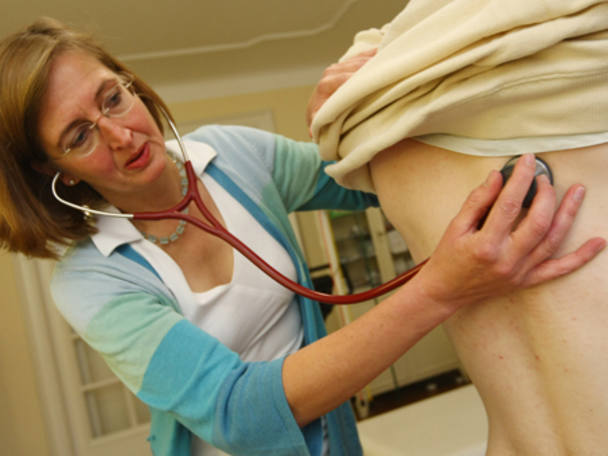The MedicX fund may be small, but its dividends are among the most reliable on the stock market. That's because they're backed by the NHS, which pays almost all the rent on the 63 properties – mainly doctors' surgeries - that MedicX owns. Leasing space to a public monopoly is the most stable business imaginable. With only one tenant in the market, there is no speculative development, no vacant property and virtually no letting risk.
- Fat dividend yield
- Stable property values
- No vacant properties
- Cheap long-term debt
- Premium to net asset value
- NHS belt-tightening and reforms
Of course, the flipside is that monopoly tenants have huge pricing power. Investors are right to question how MedicX can maintain its rents while the NHS is in belt-tightening mode and the company acknowledges that finances are tighter. "There's no doubt district commissioners want to keep costs down, and we have seen some pressure on rents," says chief executive Mike Adams. Yet MedicX claims that rising commodity prices allow it to argue for rent increases. It provides finance to build new surgeries, and can withhold that finance when a health authority fails to offer a rent that accounts for the inflation in construction costs. "In some areas where they've said 'we won't commission unless you accept such-and-such a rent', the result is that there's no development," says Mr Adams.
The figures back up these claims. MedicX has consistently negotiated increases at open-market rent reviews, to which three-quarters of its properties are subject. Those increases translated into annual rental growth of nearly 5 per cent in 2007-08, slowing to 2.4 per cent in 2009. Yet since then the rate has barely budged: the 33 leases reviewed over the year to 30 September, which was dominated by the UK government's spending review, still showed rental growth of 2.3 per cent.
MEDICX FUND (MXF) | ||||
|---|---|---|---|---|
| ORD PRICE: | 74p | MARKET VALUE: | £144m | |
| TOUCH: | 74-75p | 12-MONTH HIGH: | 80p | LOW: 71p |
| DIVIDEND YIELD: | 7.6% | TRADING STOCK: | nil | |
| PREMIUM TO NAV: | 14% | |||
| INVESTMENT PROPERTIES: | £198m | NET DEBT: | 54% | |
| Year to 30 Sep | Net asset value (p) | Pre-tax profit (£m) | Earnings per share (p) | Dividend per share (p) |
|---|---|---|---|---|
| 2008 | 71 | -18.7 | -21.0 | 5.20 |
| 2009 | 63 | -1.9 | -1.6 | 5.33 |
| 2010 | 66 | 8.2 | 6.4 | 5.40 |
| 2011* | 66 | 6.3 | 3.6 | 5.50 |
| 2012* | 66 | 9.6 | 4.8 | 5.60 |
| % change | – | +52 | +33 | +2 |
Normal market size: 3,000 Matched bargain trading Beta: 0.6 | ||||
As for the NHS reforms, they are likely to benefit MedicX. The government wants to make 'family doctors' rather than hospitals the centre of the system, which should push more healthcare to GPs' surgeries. That will require higher-spec buildings, which should command juicier rents.
If rents continue to grow modestly, property values will follow. The capitalisation rate (the multiple of rent at which a property trades) was stable for healthcare properties relative to offices or shops during the property crash, and therefore looks unlikely to budge in an economic double-dip.
That said, MedicX's shares trade on a premium to net asset value (NAV), and that might fade away. But its shares have already fallen 6 per cent since August, and arguably its book value doesn't account for the fund's immunity to letting risk. MedicX offers an alternative valuation method that factors in the discounted cash flow of its rents as if they were bond coupons, and arrives at a much higher NAV of 88p as at September. It even publishes a third NAV figure (68p in September) that adds in the comparable benefit of having raised cheap 30-year debt when its shares floated in 2006.










